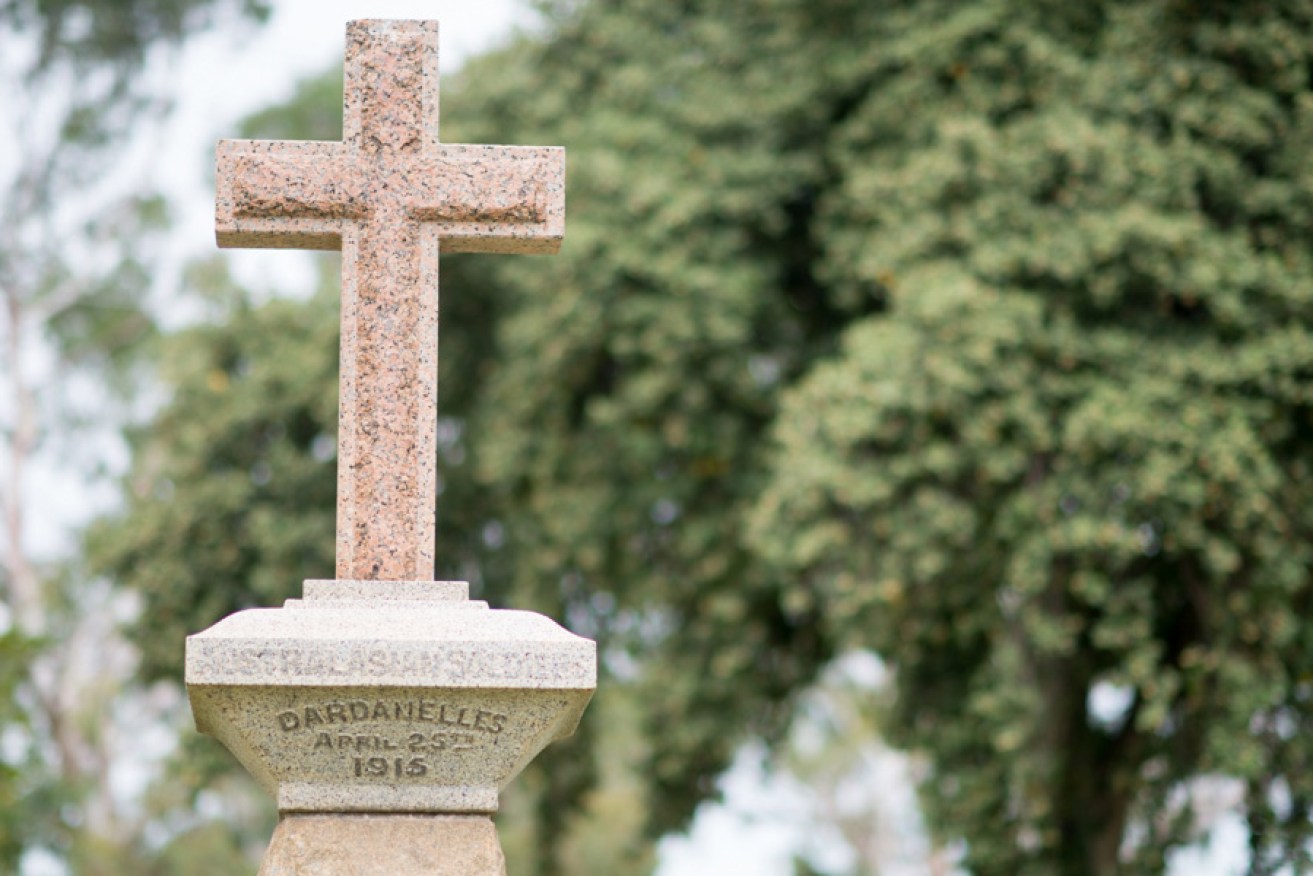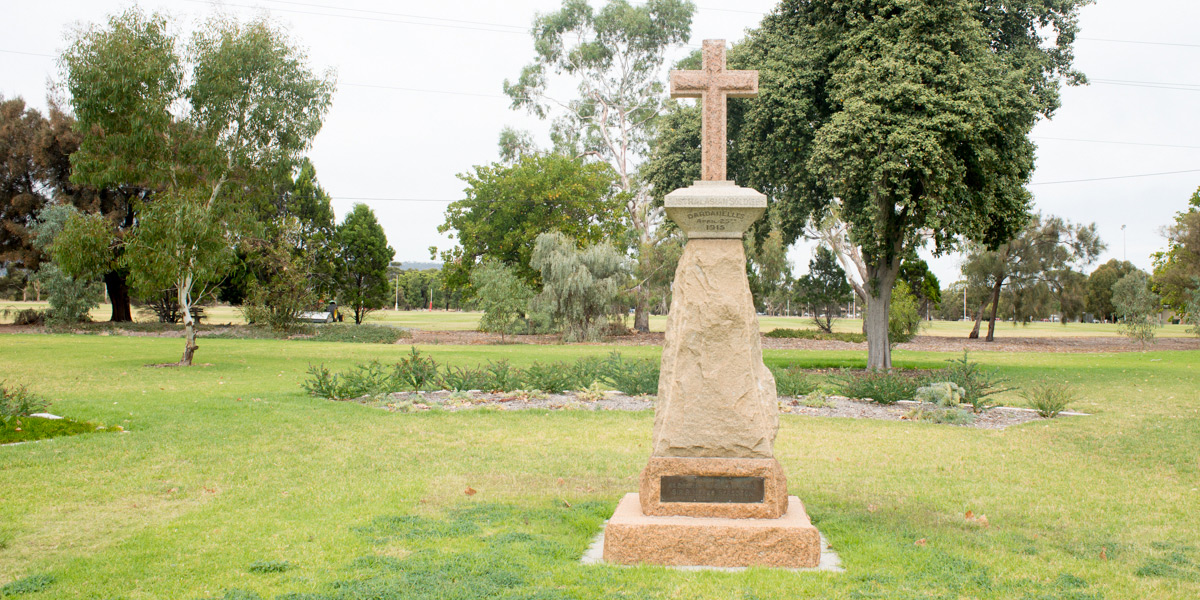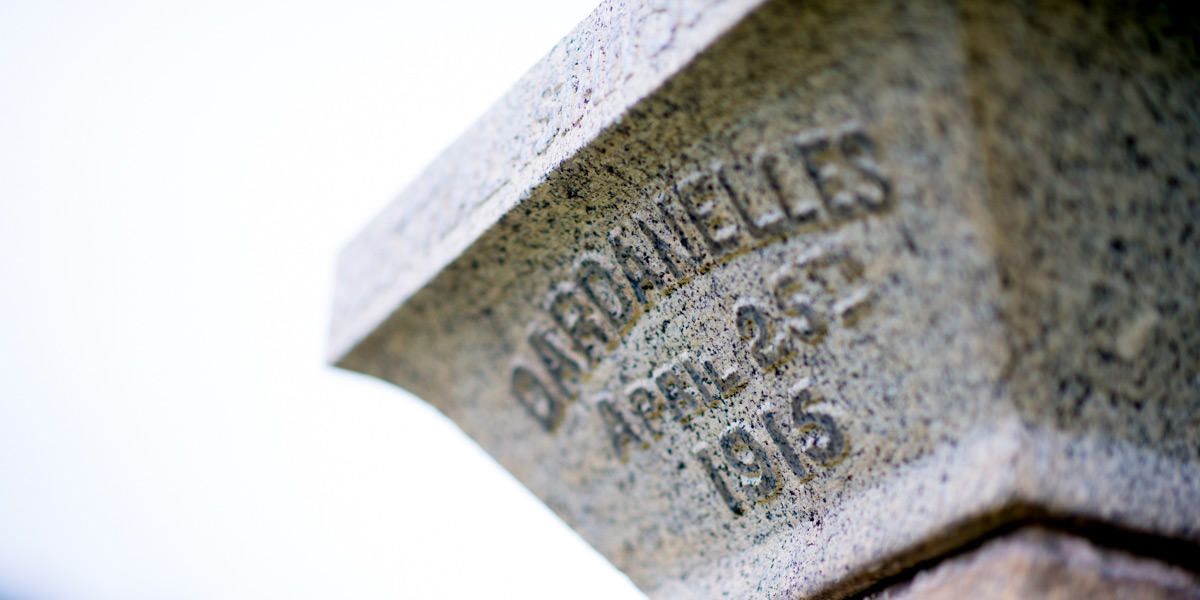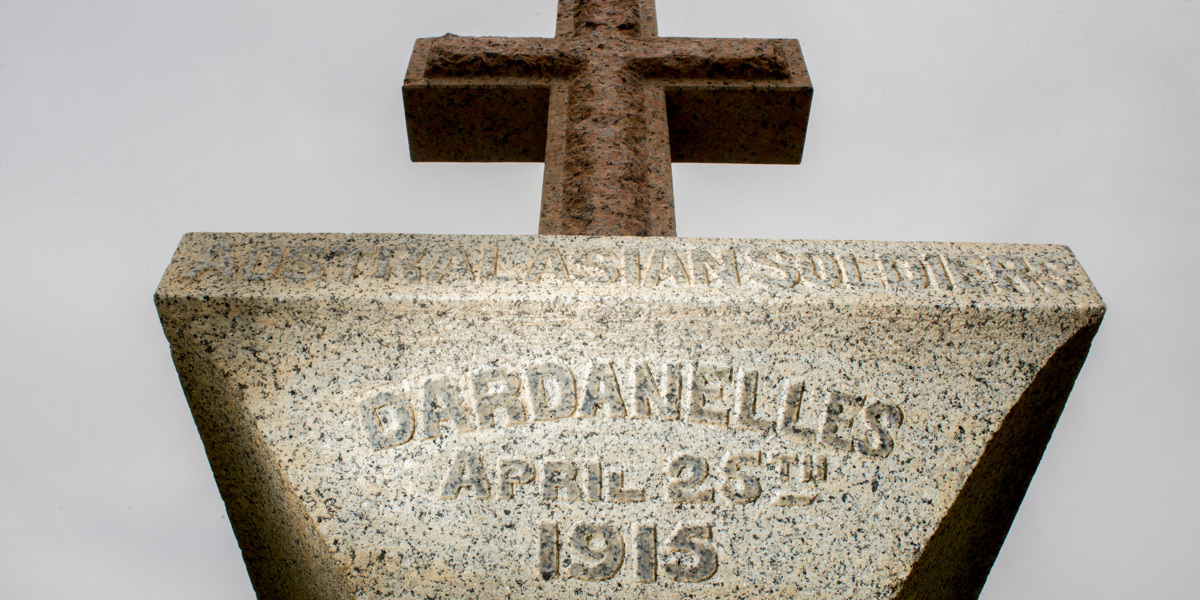Honouring the lost at the Lost Memorial

The Australasian Dardanelles Cenotaph in the southern parklands turns 100 in September. Pic: Nat Rogers/InDaily
Tucked away in the western corner of South Terrace, behind what is now a children’s playground, stands an unobtrusive stone monument.
Largely out of sight, it is correspondingly out of mind for most South Australians as we prepare to commemorate the centenary of our nation’s bloody loss of innocence on the beach at Gallipoli.
But this humble, seemingly-inauspicious cenotaph holds a unique place in our military history, as Australia’s first memorial erected to honour its First World War fallen.
Initially unveiled on September 7, 1915, it commemorates the Anzac Gallipoli landing on April 25 that same year – and mourns their terrible casualties.
Not that you’d necessarily pick it on first inspection: the monument contains reference to neither Anzacs nor Gallipoli.
Instead, it commemorates the sacrifice of “Australasian soldiers” in the “Dardanelles”.
“The word ‘Anzac’ hadn’t even been coined, and Gallipoli hadn’t come into our lexicon,” says decorated ex-serviceman and former director of Veterans SA Bill Denny.
For Denny, the history and simple poignancy of the marker is a profoundly moving tribute to South Australia’s fallen sons, and he is “completely flummoxed” that it has fallen into disregard.
“This memorial in particular is very, very important, and I’m lost as to why South Australia hasn’t embraced it,” he told InDaily.
The marker was originally established on the nearby Sir Lewis Cohen Drive, off South Terrace. It was known as Wattle Grove, a “war memorial plantation” to commemorate the Dardanelles landing just 135 days earlier, and opened as Australian soldiers were still in combat at Gallipoli.
“As you enter into the parklands, about 100 metres on the right hand side you can still see the remains of some of the old trees,” Denny explains.
It was created at the behest of the SA-originated Wattle Day League, “a nationalistic body in favour of compulsory military training”, according to the account of History SA’s Jude Elton.
League member Walter Torode, a prominent Adelaide builder, orchestrated the design – a 3.65 metre high granite obelisk – to be positioned in the middle of the plantation.
As recorded by another historian, David Faber, it was unveiled by the Governor-General Sir R. Munro Ferguson, whom the Adelaide Register reported as saying: “This initiative had caused Adelaide to be the first city in the Commonwealth to erect a memorial to the landing of the troops on Gallipoli.”
According to Denny, the original riverstone crucifix was replaced with a granite one when Australian troops finally withdrew from Gallipoli in December, “to acknowledge the 6000 South Australians left at Gallipoli”.
“It was a Women’s Memorial, and women used to go there for the services … there’s a completely inseparable link with loss and motherhood and the tragedy of war,” he says.
As a nation, Australia had until that point had little exposure to armed conflict, certainly nothing of the magnitude of Gallipoli.
Instead, there was excitement and joie de vivre.
“Off they went,” says Denny, “all these young men bitten by the adventure bug, the duty bug … their mothers never got a look-in.”
“Suddenly, in 1915, the reality starts to dawn … All these thousands of South Australians never came home.”
 But within two decades, the site had fallen into disrepair – overgrown and ignored.
But within two decades, the site had fallen into disrepair – overgrown and ignored.
Denny believes by this point, the romance of the conflict had been “completely and utterly lost”.
“There is no romance in war, in reality,” he said, “and attendances started to lapse”.
“My estimation is people just didn’t want to know about the war any more.”
During the Great Depression, he said, “people came in and chopped down all the Wattle trees for firewood”.
Finally, in October 1940, the city council shifted the obelisk to Lundie Gardens, which Elton notes was “the site of a First World War training camp”.
“For some reason, it never got any more recognition,” Denny muses.
But he says he has made it a crusade to restore the memorial to the state’s annual commemorations.
“That first overwhelming reaction to the loss of war created this memorial…and that’s why it means so much to me personally,” he explains.
“This is what touches me; it’s the first gut reaction of lovers and mothers and sisters and fathers to the loss and carnage at Gallipoli.”
Elton tells InDaily there has been “less awareness of the cenotaph for some time (as) the larger memorials have a particular cultural focus”.
However, she believes its significance is starting to garner greater recognition.
Two years ago, on September 7, 2013, a service was held at the Cenotaph to honour the South Australian fallen and their brethren.
This year, Monday September 7 marks the centenary anniversary of the first memorial to remember the Gallipoli campaign.
A commemorative service will be held, and Denny will be among those attending.
“We’ve tried to put it back where it belongs,” he says.






